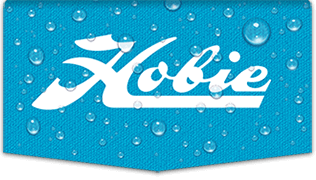Hi Everyone,
I was hoping I could get some advice! I have been looking at this forum and hobie forums and with the change in hobie 18 mast design from full aluminum to the comptip I am not quite sure which advice to follow for tuning.
1. I have mostly been following Bob Milimitch Hobie 18 tuning guide. Can someone confirm if that guide is for a comptip mast and also if they are the latest and greatest tuning tips for racing?
http://www.fleet297.org/PDFs/Hobie18TuningGuide.pdf2. Is this generally correct for a comptip mast:
Mast Rake ... Back = less power, fwd = more power
Diamond wire tension ... loose = less power, tight = more power. What does loose "look" like and what
does tight "look" like?
Rig tension ... no idea what to set this to? i heard maybe 4" of movement?
Outhaul ... what is the correct tension for upwind, tight tight or 4"?
Dagger boards ... is the strategy similar to F18 where full down is max power and moving them up
reduces power?
mast rotation ... i always read start at side stay and move backwards to reduce power but then recently I
found a post talking about lining it with the boom is a better sailshape? which is best?
3. Again, comptip mast. I have installed a 5:1 downhaul that i can pull from the wire and I just dont seem to feel the difference. How can I be sure the downhaul is performing the depowering and flattening that I expect it to? How far should I expect the sail to travel? It is currently travelling about 10cm (as far as it can go) but when I release it, it only raises up 5cm. I tried to pull it during a puff where we lifted the windward hull but it did not seem to stop that from happening. Am I missing something on how it is used?
4. These are my current settings, and sail shape for going up-wind. Note that I am solo here so no jib.
https://www.instagram.com/p/CBItsj-BTnF/Mast rake ... using the trapeze wire, from the bottom of the jib furler to the back transom...lands 5" above
the transom
Diamond wire tension ... cannot touch the mast with diamond wires
anywhere
Rig tension ... wires move approx. 8 inches on windward side
5. Tell Tails
--Based on the picture are my tell tails in the right location?
--I read in a post that a set in the 2nd and 3rd panel from the top (i assume that means the first two light blue panels) is best because it shows you the twist and tells you how much more you can pull in the sail. If so, does that mean you have to keep those flowing at all times? How far from the luff do I install them?
--Are these top sets the ones to watch? I have typically used the lowest set for determining my sail shape, I assume that is wrong?
--i do have leach tells on the 3rd and 5th panels. I also keep them flowing as best i can, is that correct and does the 3rd panel leach tell all i need for confirming sail twist is ok?
is a set of streamers on the front bridal or side stays better for determining the 90 degree apparent wind for downwind? I have them on the bridal but find it difficult to tell if they are 90 or less/more.
6. Pinching vs. Footing
How do you really tell if you are in the "groove" or just footing? typically I can tell when I am pinching but I also cant tell if I am pointing high enough? As an example in the picture, although I believe I am upwind, I may in fact just be footing?
7. Jib luff tension
any advice on this? All i know is to set it once there is some tension on the mast so as to not put all force on the jib luff and still rely on the forestay (opposite of the H16 it seems?)
I know this is long but any help would be much appreciated!
-C
**Note i also posted this on Catsailor.com**





